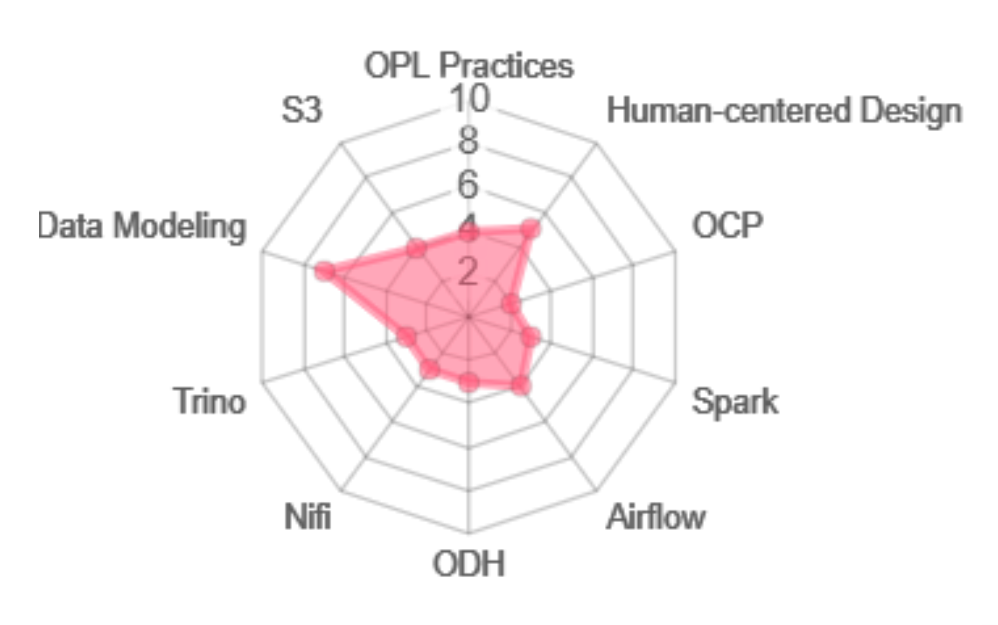Rose Chart
Identify knowledge gaps and create learning focus areas for team members
Jerry Becker
Darcie Fitzpatrick
What Is Rose Chart?
Rose Charts are visual artifacts to display personal competencies in key learning areas in order to highlight strengths and opportunities for up-skilling.
Why Do Rose Chart?
Having Rose Charts for each team member allows everyone to understand where specific skills and competencies reside within the team, as well as areas of growth opportunity for each individual.
Having this information transparent amongst the entire team helps people know who to go to for specific knowledge and/or mentoring. It also gives team leaders a quick analysis of team skills in order to create tailored learning plans for individual team members who are less competent in some areas but want to improve.
How to do Rose Chart?
Steps:
- Identify key competency areas you wish to have team members self-evaluate on. Label these areas in the "Category" section of circular spider chart in the Rose Chart template. Leave the 2 additional categories off to the right-hand side of the chart blank. These will be filled in by team members (more on that in a minute).
- Once your categories are selected, either digitally send or print out physical copies of a Rose Chart template for each team member.
- Have team members use the Rose Chart to self-assess their competency within each given category (see key at top-right of template for how to rate each category competency).
- Next, turn everyone's attention to the 2 blank category sections on the far-right of the template. Have team members create their own categories for these 2 areas, different than the ones on the left-hand spider chart. These are categories in which they personally wish to up-skill.
- You can either have team members present their charts to everyone to drive conversation and potential pairing for mentoring, or have them hand over their charts directly to the team leader for review and subsequent planning.
- After a set amount of time (either at the end of an engagement or weekly, monthly, quarterly, etc) have team members update their rose charts in order to show growth in key areas. Review and do additional planning for knowledge-sharing based on these updates.
Look at Rose Chart
Links we love
Check out these great links which can help you dive a little deeper into running the Rose Chart practice with your team, customers or stakeholders.


